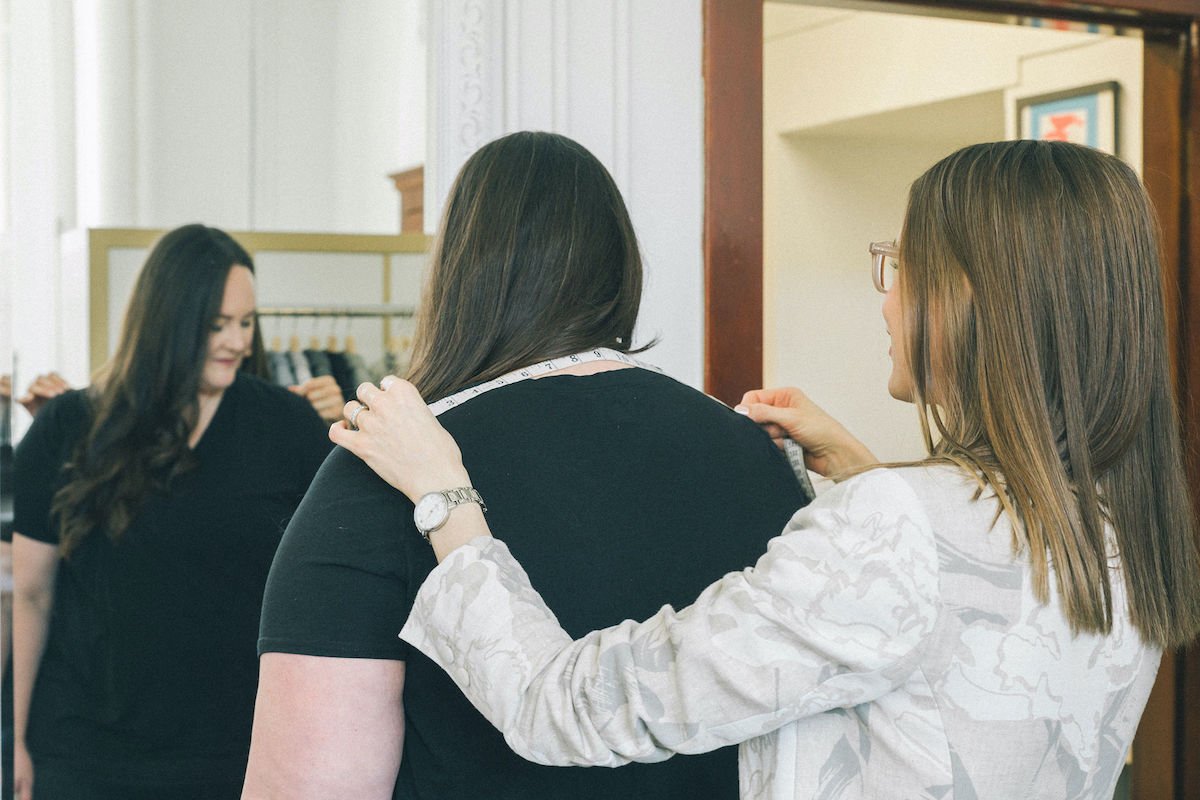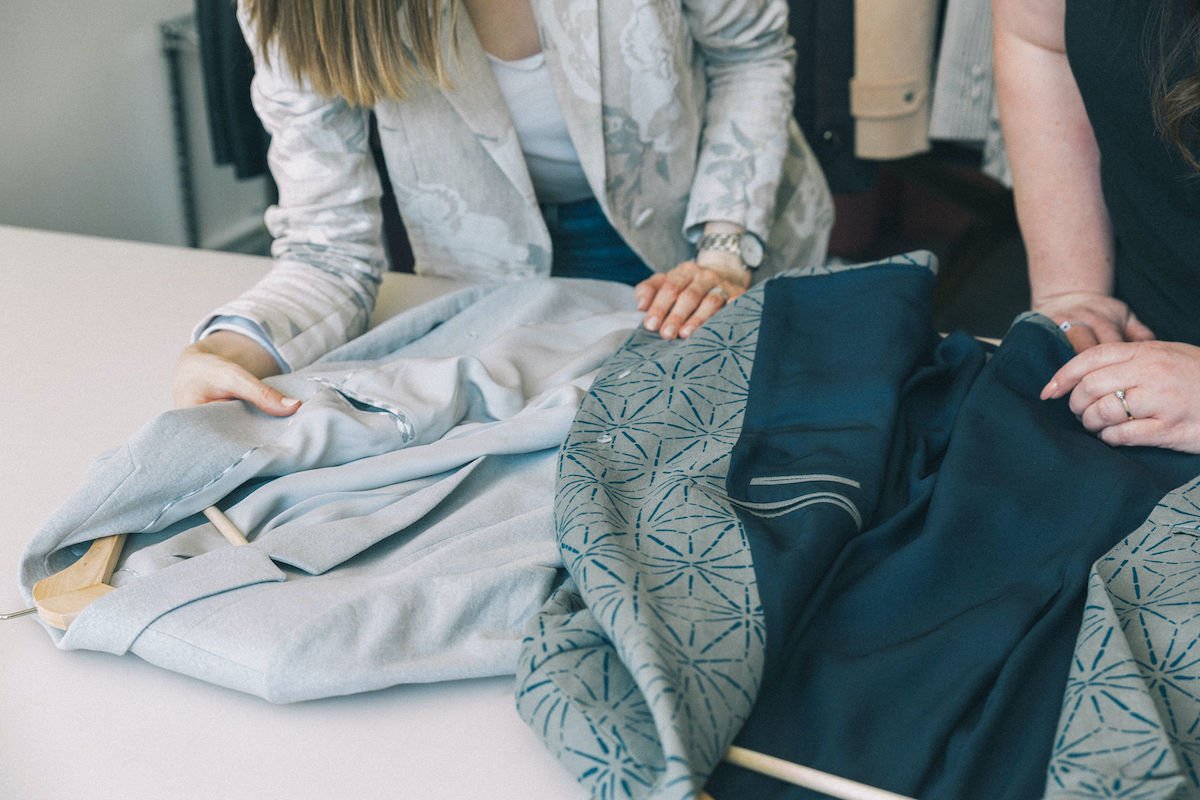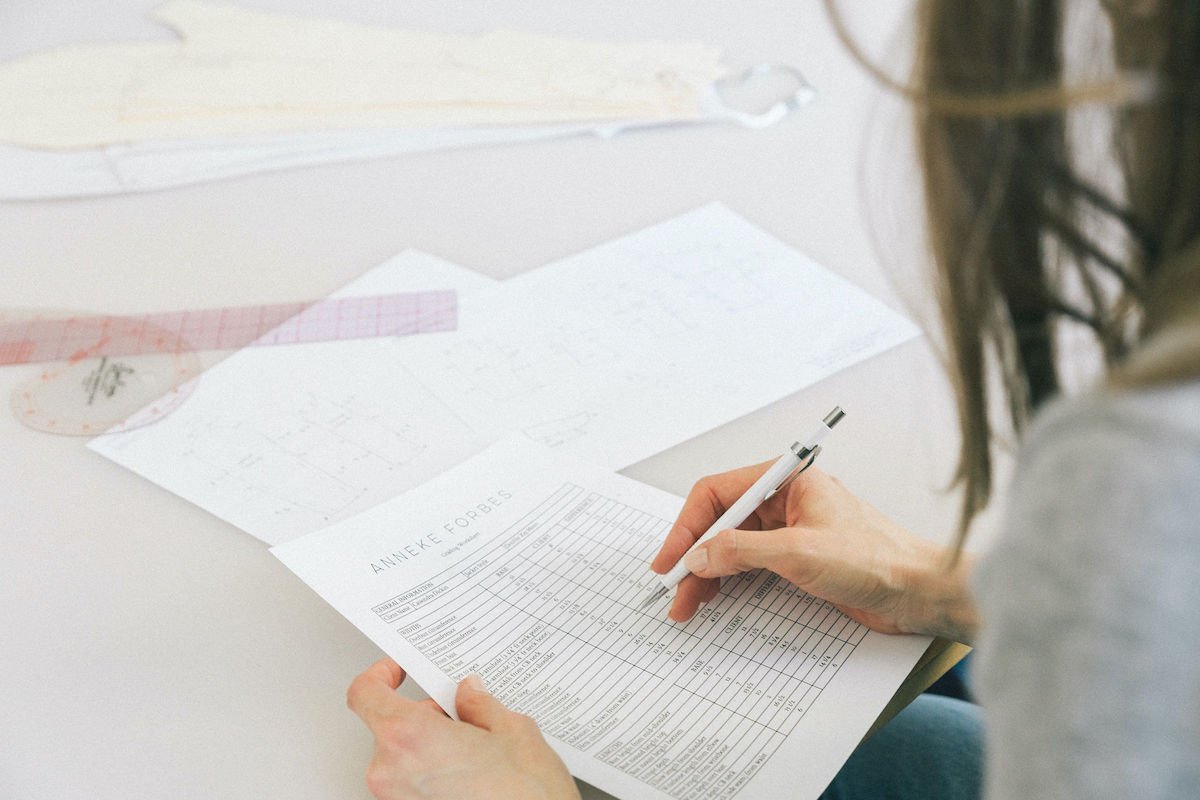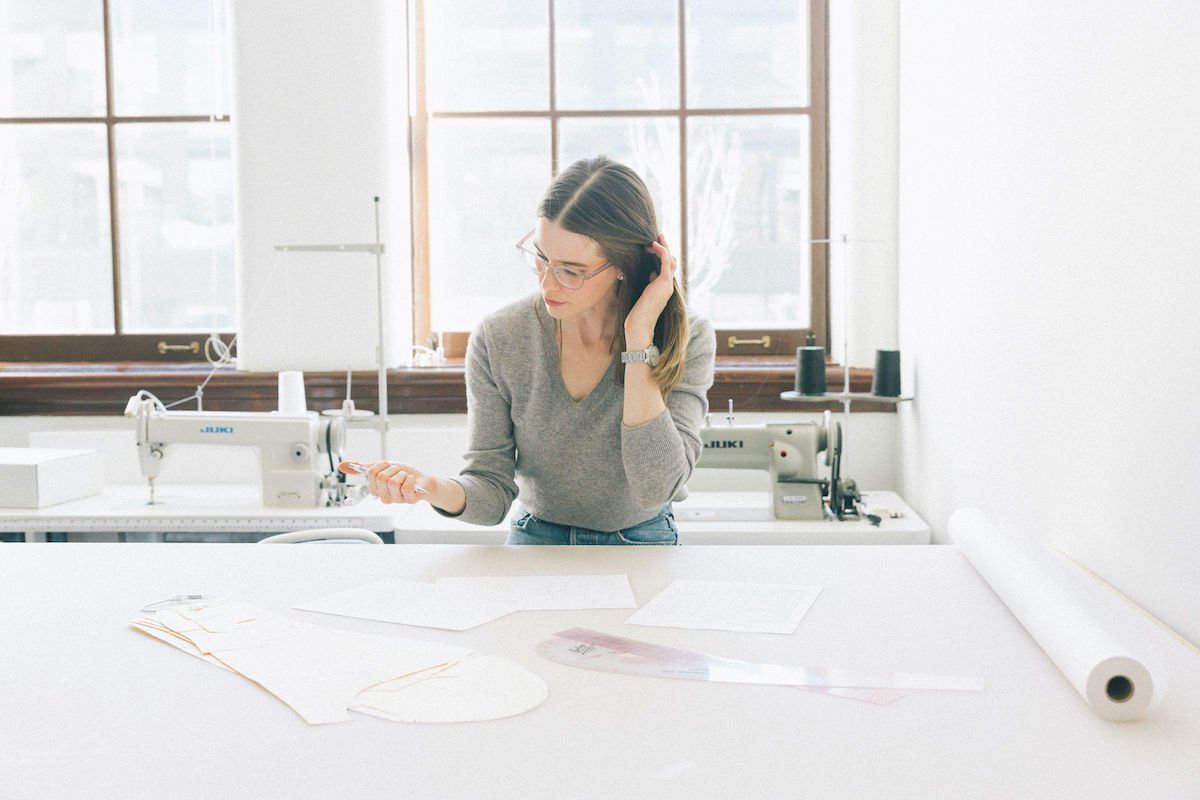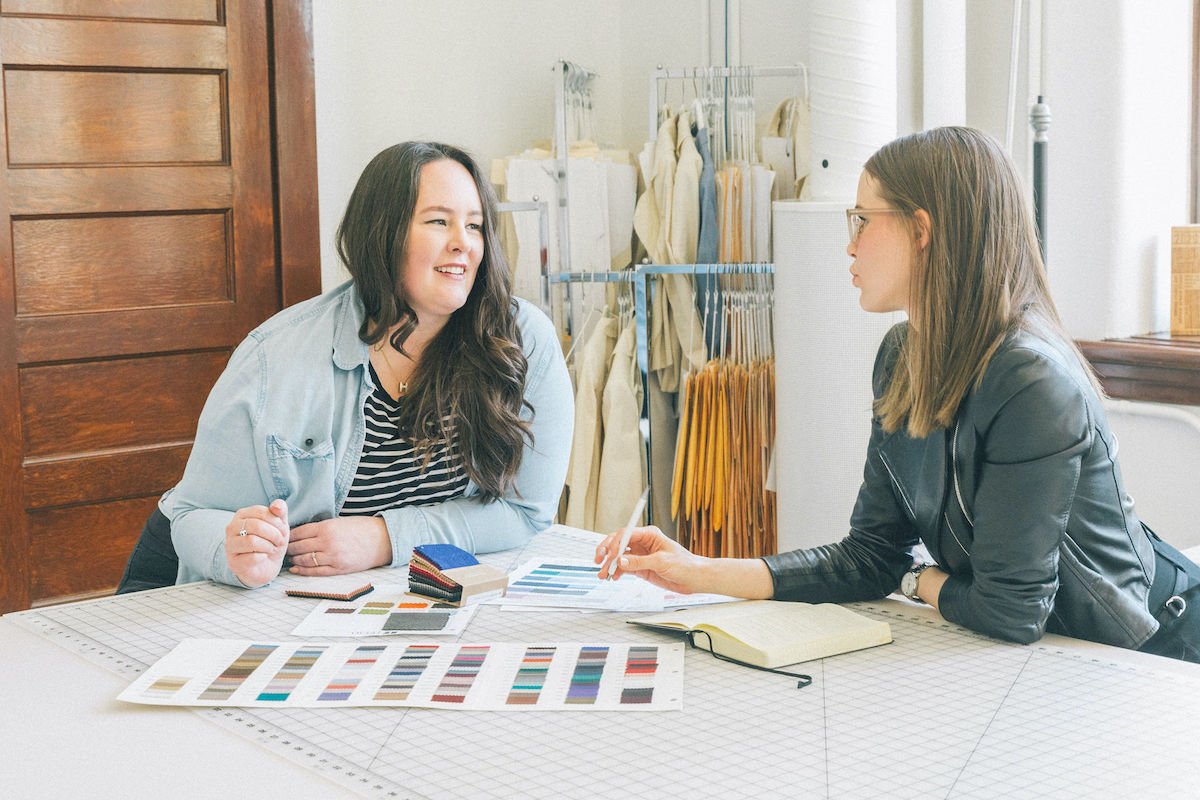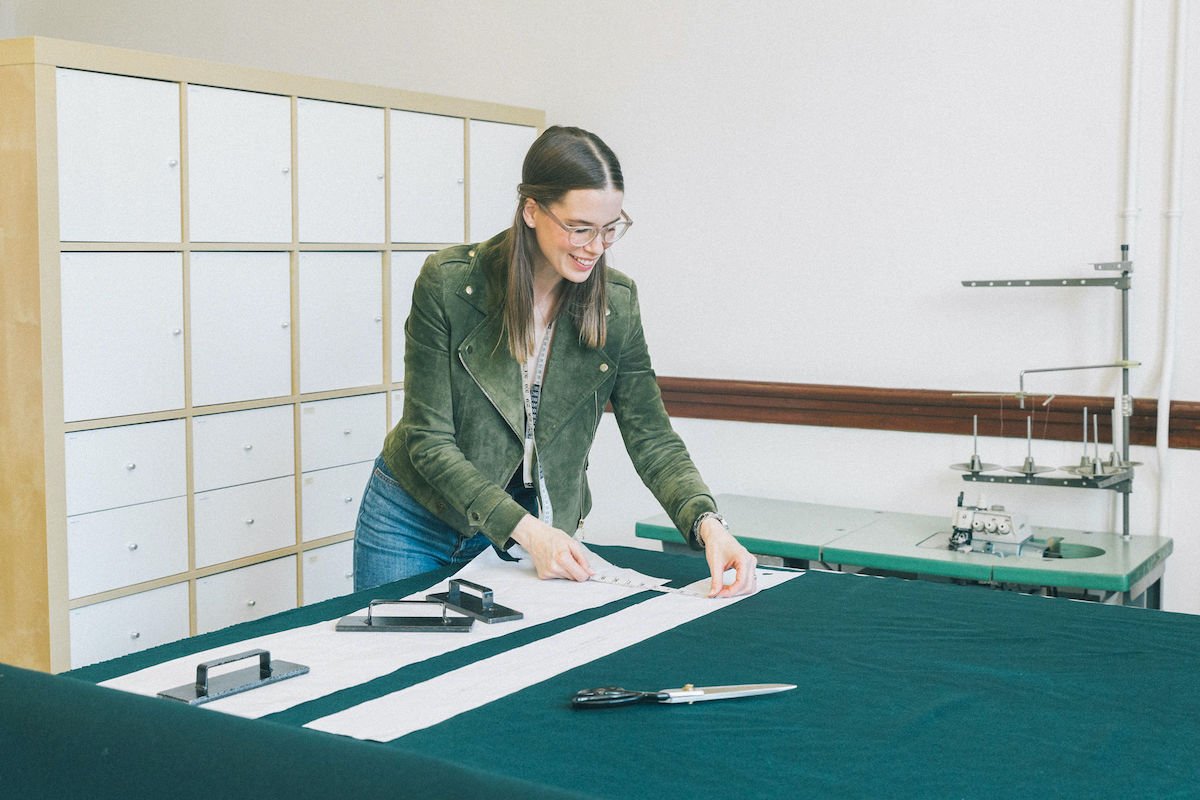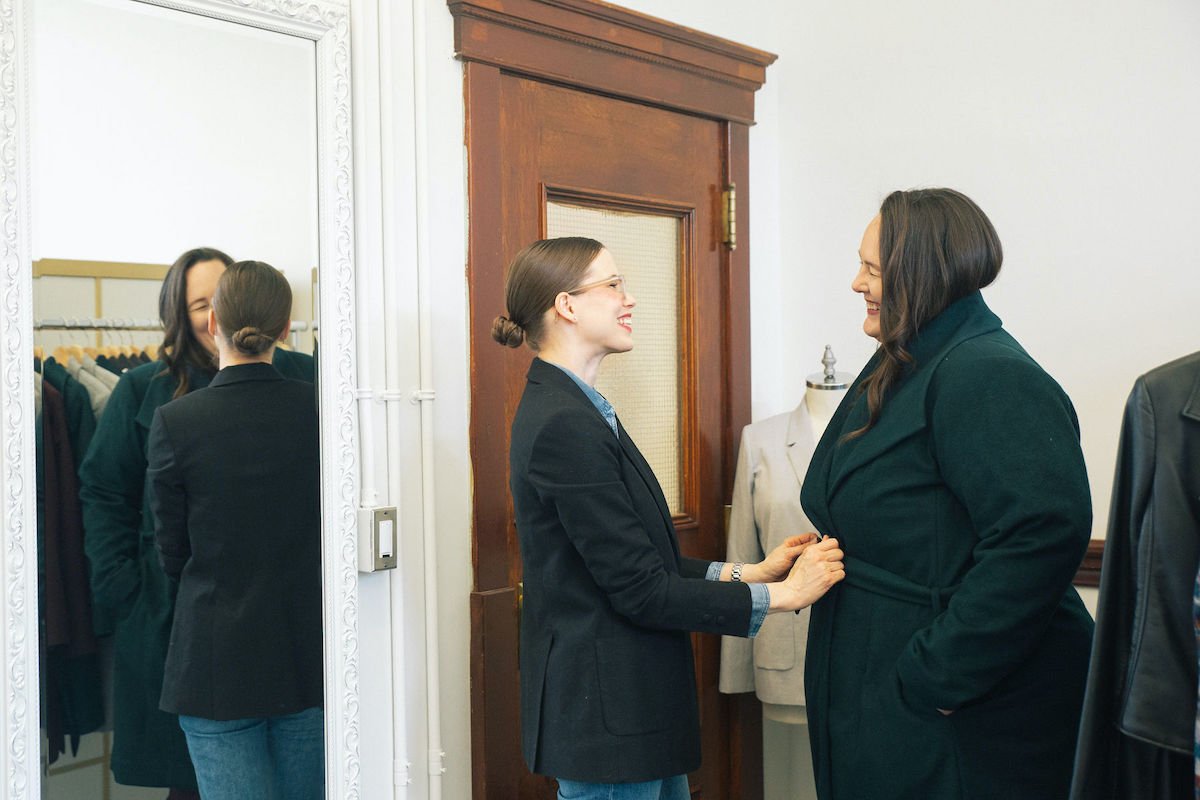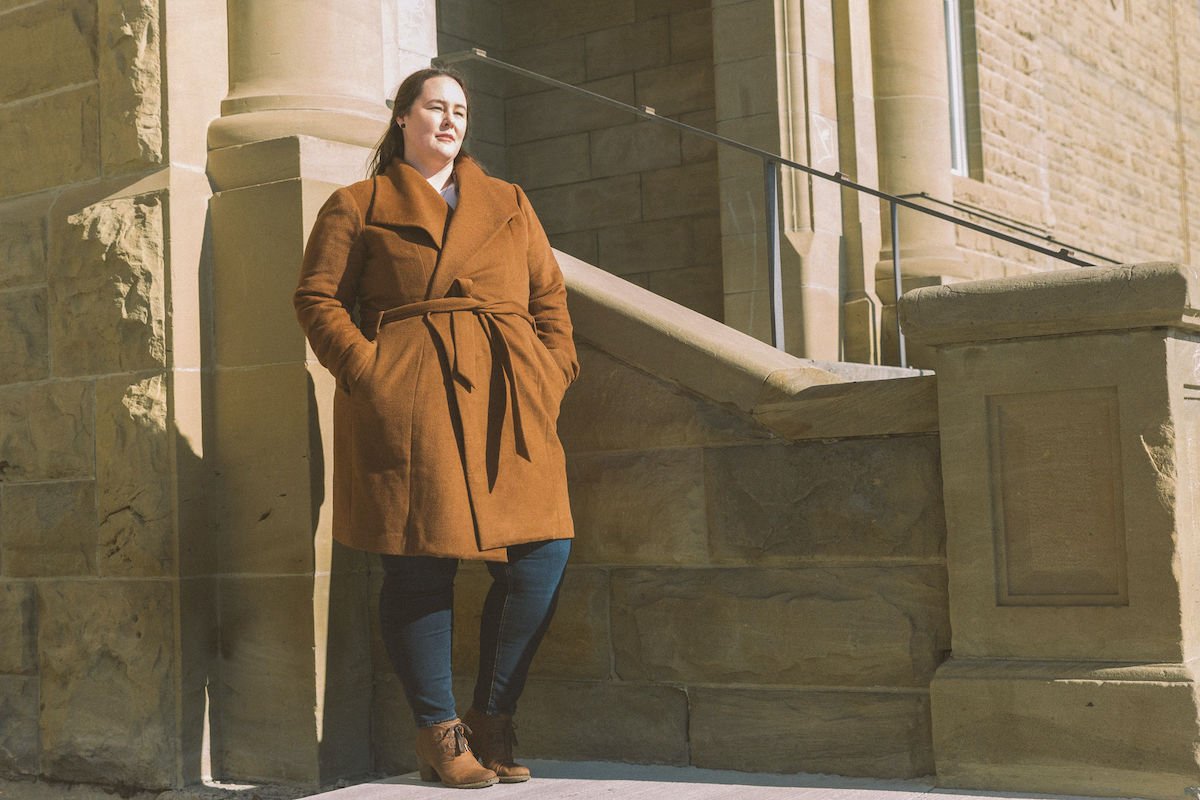BEHIND THE DESIGN: CREATING A CUSTOM JACKET WITH ANNEKE FORBES
The designer takes us through the step-by-step process of designing your dream jacket
If you’ve been around the PARK circuit for a while, you’re likely already familiar with Anneke Forbes. The Calgary-based designer has appeared at numerous PARK fashion shows and events through the years, marking her official PARK debut at PARKSHOW 2015. Since then she has continued to make her presence known in the industry with her custom, timeless, and quality designs that could very well become your next family heirloom. And we’re not sure about you, but when it comes to jackets and outerwear it can be challenging to find the perfect style and fit. This is where Anneke’s expertise comes in. Working alongside her, you can create a dream outer garment that you’ll have and love for years to come. Here’s what that process looks like, as told by the designer herself:
1 | Measurements + Photos
During your initial appointment, I collect measurements and figure photos, and we discuss your selections for fabrics, hardware, and design details. A well-fitting jacket begins with precise measurements, so I will record up to 36 unique measurements. The personalized fit achieved takes into account not only your size, but also shape, posture, and distribution. For example, I am currently making a jacket for a woman who broke her collarbone, so we are accommodating the difference in the slope of her shoulder when creating her pattern.
2 | Fabric + Design Detail Selections
I often refer to the measurements as the main course and the selections as dessert because it is such a fun process, both for my clients and me! I love seeing what other imaginations create and there are always special surprises that are personal to that particular woman. If you aren’t sure which direction to take, my studio abounds with inspiration and I’m happy to offer my design opinions, which are informed by my past client experiences.
Selections for jackets include the colour and style of the exterior fabric, lining, hardware, piping, inside pockets, embroidery, bound seams, and lambswool interlining.
Fabric choices aren’t limited by colour, weight, texture, pattern, or content. I encourage my clients to choose natural, or mostly natural fibres for their longevity and wearability, but can source synthetic options for those who aren’t fussy, or when budget is a concern.
Fabric and design detail choices can have sentimental meaning, or just be a way to have fun and make the jacket feel extra just-for-you! For example, one client is having her initials embroidered in gold because her grandfather, who was a furrier, used to make her grandmother coats with her name embroidered in gold on the inside.
3 | Sample Sourcing
Once we have a vision for your jacket, I set about sourcing fabric samples so we can see everything together in person before committing to the final yardage. I start locally, but broaden my search to find the best options that reflect your preferences, budget, and timeline. There are so many beautiful options out there that you need not limit your imagination. Recently I’ve sourced a summer-weight sage wool for a blazer, and a jaguar print with hints of blue to line a moto, based on clients’ specific ideas of what they would like to create.
4 | Pattern Drafting
While we wait for the fabric samples to arrive I begin drafting up your first pattern, starting from a base pattern and making thoughtful adjustments for each unique body. Two clients may have the same bust, waist, and hip measurements, but their weight distribution can be completely different. The fit is extremely personal - if your arm is longer in the bicep area than in the forearm, the elbow will be placed at the right height.
Off-the-rack has offered us affordable fashion, which is undoubtedly valuable in terms of financial inclusivity, however its narrow standards for acceptable sizes and shapes have sent a message that we need to change what makes us unique, or accept substantial fit compromises. It is super satisfying to create jackets that fit because it sends an empowering message: Your beautiful body is perfect - it’s the clothes that need adjusting. I also love that numbers or names are not given to a custom fit garment. What size is it? Your size. If custom clothing is within your budget, it is worth the boost in body positivity.
I am currently a company of one, completing every step personally. This helps ensure continuity throughout the entire process. When I do outsource production, it is to exceptionally talented and experienced local women who care as much about your jackets as I do. The coats we created for Johanna in these photos were drafted by my fit specialist, Martina, whom I have worked with on patterns for many years.
5 | Fabric Approval
After I’ve mocked up your pattern in a cotton muslin fabric and all of your chosen fabric swatches arrive, you come in for your second appointment where we test fit and review fabric options.
It’s always fun mixing and matching the various fabric and lining options to find the perfect combination. I also have hardware on hand to help visualize the overall completed look. I am there to offer guidance if you'd like, but in the end the jacket is meant to be a personal reflection of each client’s individual taste. I am making a black on black leather jacket for a client who has a neutral-coloured capsule wardrobe, but I’m also making the exact same style in bright yellow for another client who is looking to have some fun with the wardrobe addition.
6 | Pattern Fit Review
You try on the cotton mock-up and we assess fit from top to bottom. The fitting is guided by a checklist and every detail is noted to ensure the pattern adjustments align with our discussion. How is the shoulder width and slope? What does it feel like when you cross your arms? Do we need to move some of the fullness from the side panel to the front? How do you like the sleeve length? Where should we place the pocket? These are just a few examples of the questions I ask as I strive to create a pattern that feels like it was made for you - because it was.
I cut the cotton or open seams in areas where fullness is lacking, pin areas that sag or feel too full, mark important points on the body like the bust and break point, and make notes regarding amounts to lower or lift. The fabric will pull, drag, wrinkle, or sag when there are fit concerns and it is my job to understand what pattern edits are required based on these cues. But I also pay close attention to how you feel in the jacket. Personal comfort, lifestyle, and what you plan to wear with the jacket all play a part in shaping our perspective on fit.
Fabric swatching and pattern edits are repeated until you are entirely happy with both the fit and fabric.
7 | Cut + Fuse
At the moment, I personally cut and sew every single jacket myself in my studio. I have been making clothing for 29 years and absolutely love cutting and sewing the garments I design. I have a production checklist that outlines all of your finalized decisions to make sure nothing is missed.
Your fabric is laid out on a large cutting table and the patterns arranged on top. I add seam allowances directly to the fabric, then cut each piece with a rotary cutter. Each panel of fabric is then prepared with the appropriate supportive elements like interfacing and tailor’s tape, and markings such as buttonhole placement or darts are transferred with thread to the piece.
8 | Sew + Finish
The final fitting is done in the actual jacket fabric to accommodate for variances from the muslin’s drape, weight, and finish. For this reason, I begin by sewing the outer shell of the jacket first. Only after we’ve confirmed fit in the final fabric do I draft, cut, and sew the interior.
The design details of my jackets are technically challenging. The Bluff Pocket Blazer features hand finished bound buttonholes and the Double Zip Moto’s sleeve opening with exposed zipper, welt, and gusset take patience and precision. But I gain no greater satisfaction than sewing these details because they elevate simple classic shapes to something truly special.
Once the jacket is sewn, I give it a good press and lint roll, place a business card and spare parts in the pocket, and zip it into a pristine white garment bag on a wooden hanger.
9 | Pick-Up
It is always a special moment to see my clients in their final jackets. We talk through ways to style it and, of course, how amazing they look in it. The motos can be worn four ways, and I like offering different ways to tie the wrap coat’s belt.
By this time, my clients and I know each other well and are mutually proud of the garment we created together - completely unique, and just for them. It can also be a bit of a happy surprise because you don’t really know what your final jacket will look like until this moment!
10 | Repeat!
Co-creating a one-of-a-kind, made-to-measure, customized, 100% personal garment can be addicting. Many of my clients return to create another item, so I archive all past patterns so they are available if you would like two coats in the same colour, like my beautiful client Johanna, who graciously agreed to model her wrap coats for me.
Interested in creating your dream jacket? Book an appointment and find all the details on Anneke's in-production styles online at www.annekeforbes.com. Gifting the custom jacket experience is also a thoughtful gift for a loved one that will be cherished forever - gift cards are available here!
Credits
Words: Anneke Forbes | Photographer: Emma Palm - www.emmapalm.com | Model: Johanna Hannaford | Location: cSPACE King Edward - www.cspacekingedward.com

